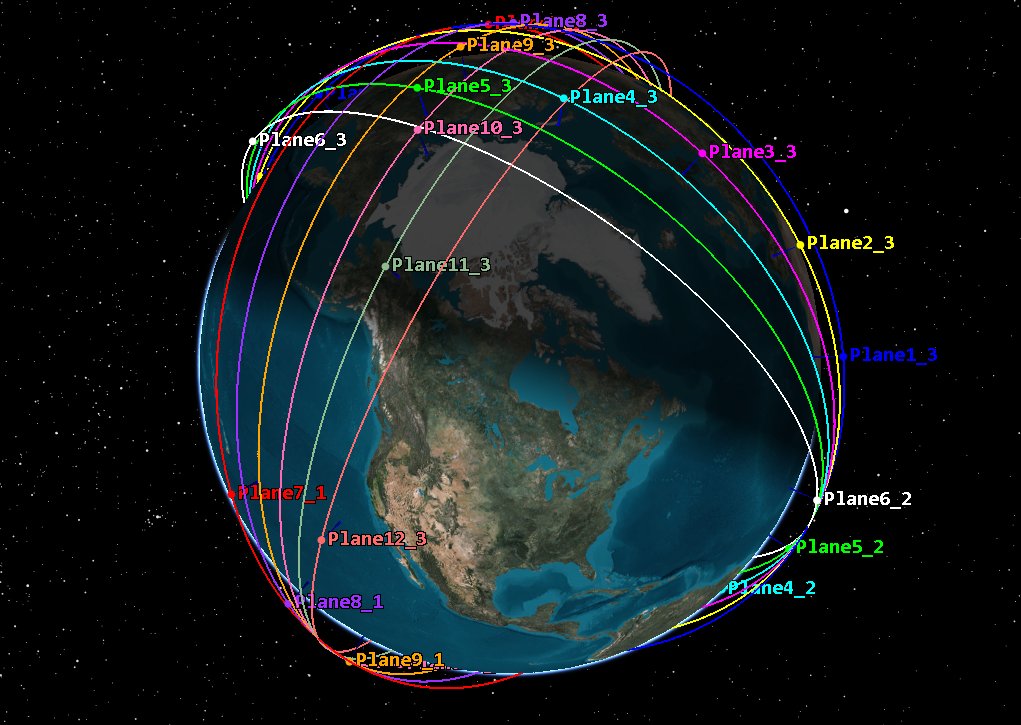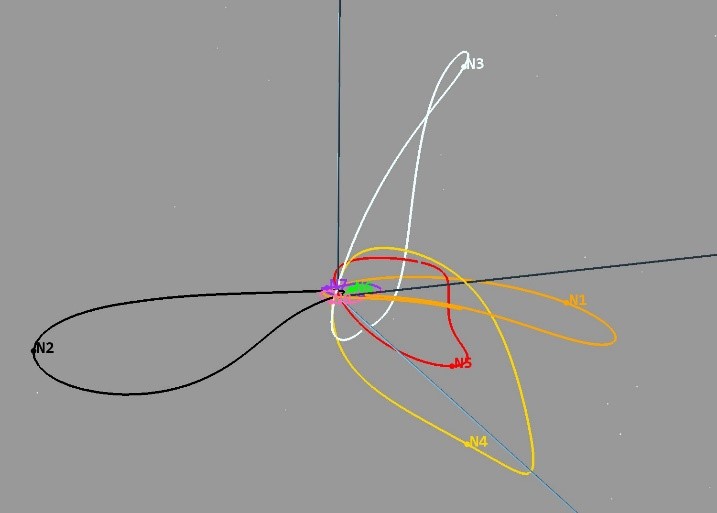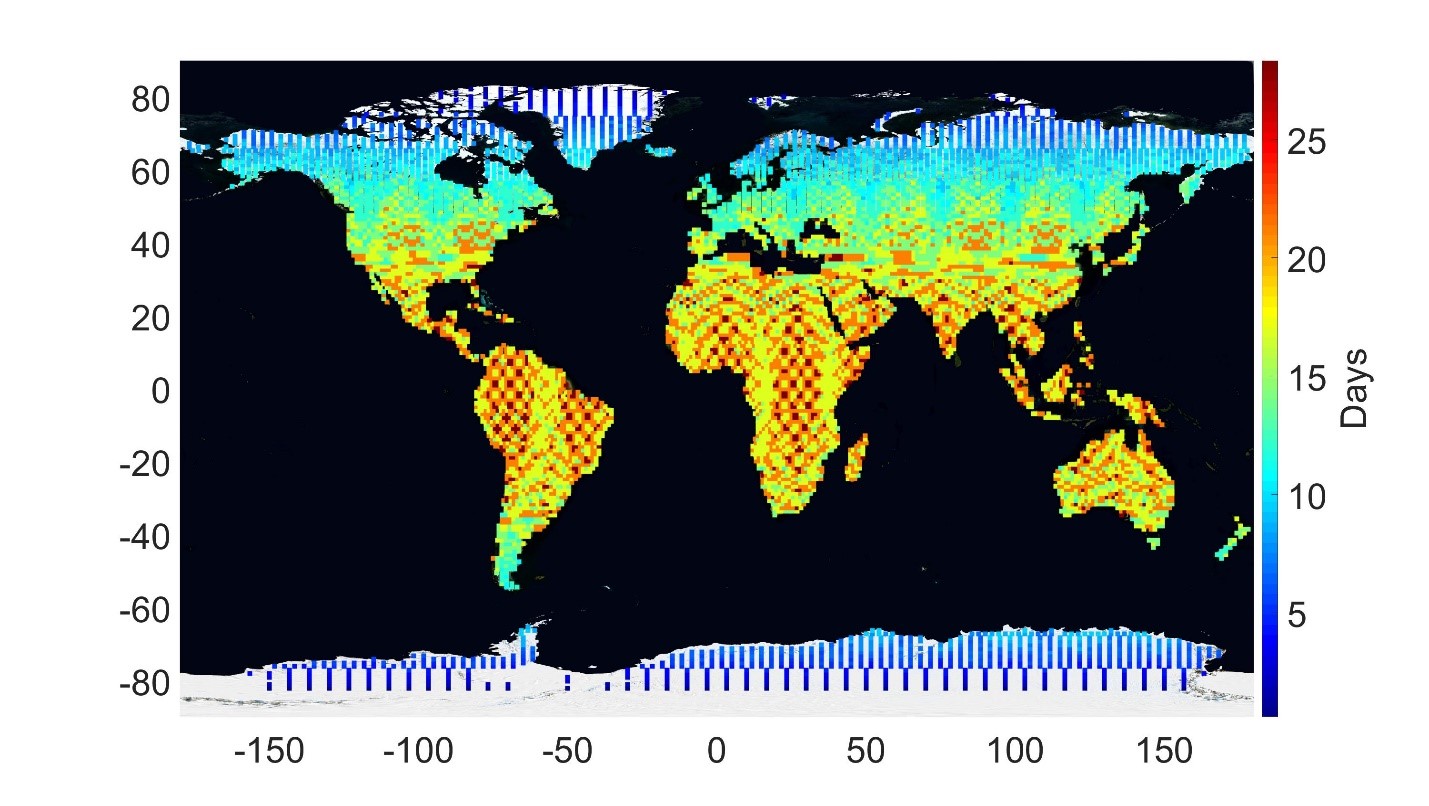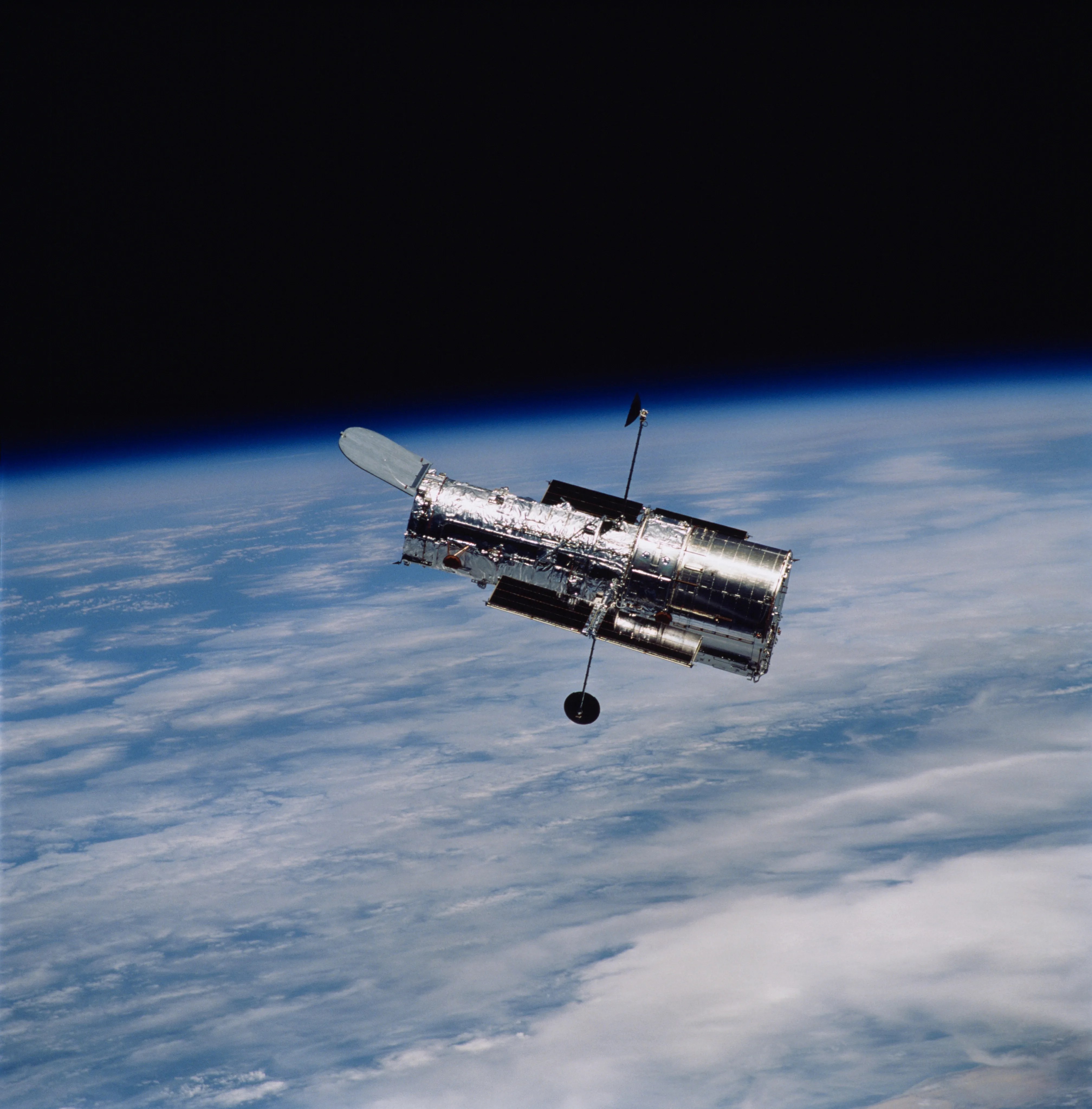Formation Flying
The focus of formation flying is to maintain a targeted orbit configuration of various spacecraft. Having multiple satellites fly in a specific geometry avoids the technical and financial challenge of building one satellite of equivalent size.
NASA Ames has taken a close interest in formation flying missions. Formation flying consists on the maintenance of a desired relative separation and orientation between multiple spacecraft. There are various types of formation flying missions, such as constellations (a collection of spacecraft that make up the space element of a distributed space mission), and swarms (a collection of spacecraft operating in close proximity as a single entity).
Multi-satellite relative motion
HelioSwarm multi-satellite mission
The HelioSwarm project, in competition for Step 2 of the 2018 Heliophysics MIDEX opportunity in NASA’s SMD, uses 9 satellites to create three dimensional configurations for three main requirements
- Orthogonal baselines that project onto three dimensions relative to the Sun vector and ecliptic plane, simultaneously in small, medium, and large scales.
- Tetrahedra in near-regular geometric forms, simultaneously
- Return each deputy satellite to few km proximity of the chief by turns for high data rate crosslink.
NASA Earth Decadal Survey – designated observables
The FD team has contributed to the NASA Earth Science Decadal Survey by providing constellation analysis for a variety of trade studies that supported the development of several mission concepts. The constellation analysis include the study of several different architectures and the evaluation of the performance of several remote sensing models.
The Surface Deformation and Change (SDC) project, within the Decadal Survey, furthers our understanding of the dynamics of a changing Earth. New constellations of satellites allow for more advanced observation techniques. These constellations are evaluated based on key metrics such as revisit time and percent coverage of target areas over time with a variety of assets and constraints.



































